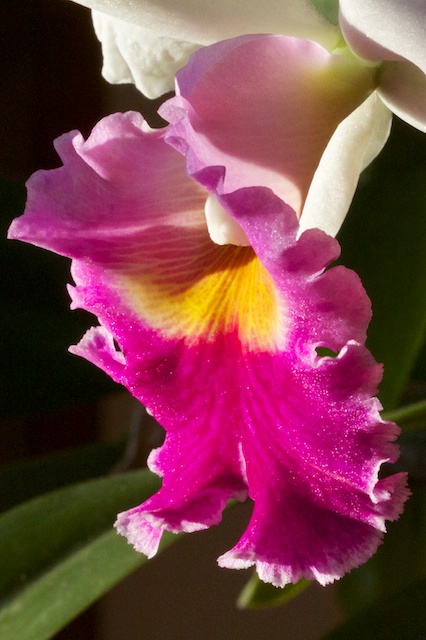One of the nice things about the late fall is that we bring the Orchids inside when it starts to get cold. They get very minimal care on a shady porch all summer long. When we bring them in they all respond by flowering, each type in it’s own turn. Right now the Cattleyas are having their say. The white and red one is about 2 1/2 feet across out of a 10 inch pot. We really have to think about repotting it someday. All the orchids are wonderful but the Cattleyas are simply stunning to look at. The silky petals and sepals and the colorful lips with the delicate ruffles at the edges are always attention grabbers. But to cap it off, as if nature decided to go all out on this one species, the fragrance is spectacular — a combination of cinnamon and vanilla that is intoxicating. I find myself stopping by to indulge in the scent several times a day. The flowering is measured in weeks rather than days. Indeed some our orchids seem to persist in bloom for more than a month. If you have a sunny window in the wintertime, there is little reason not to be growing orchids…
Another exotic flower for the indoor garden which requires even less care than the orchids is our Amazon lily. This one looks like one of those green tropical plants that you move around in the house like a piece of furniture except that twice a year it shoots up these beautiful white flowers to remind you that it is indeed a remarkable plant.
The flowers are not only lovely but fragrant as well. I don’t think we’ve repotted it for ten years. It sits in a well lit room with northern light and it flowers like clockwork. I had been calling this Eucharis x grandiflora but after consulting the pages of the Pacific Bulb Society I realized that it’s actually E. amazonica. According to that source this is just a single plant from the Huallaga valley in northeastern Peru that has been cloned all over the world. There are no records of it actually producing seeds. Pretty remarkable when you stop to think about it…




